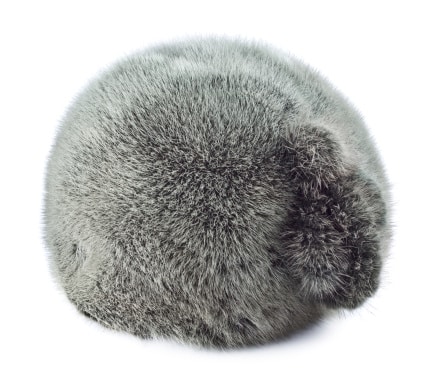The dust bunny from Dolores Claiborne’s nightmares.
Marshmallow goo? A newborn chick? A big, comfy quilt? No, no, and no. When we talk about “fluff” in the content marketing world, we’re talking about those pesky, “extra” words that clients dread. They do nothing but drive up word count and most clients want to avoid them at all costs. But what exactly is fluff? And how can we avoid it?
The Awful Truth About Fluff
Here’s the thing: fluff happens. It’s happening right now in this very post! In order to engage a reader, to draw them into a piece of writing, sometimes you need to describe images or use words in a way that isn’t totally necessary to the client’s immediate purpose. But there’s a big difference between “good” fluff and “bad” fluff. A little lengthiness in your sentence variety can actually pack a big punch when you’re working on a project like email marketing copywriting. This type of writing can hook readers in with a powerful voice and persuasive, interesting word choices. On the other hand, “bad” fluff is actually a more serious sin that just a few extra words. It means you need to look closely at your sentence structure. It means, gentle writer, that your fluff may be a symptom of a larger problem: bad grammar.
Grammar? Really?
Take a look at a piece of your work you consider to be “fluffy.” Now go through it with your word processor’s highlighter tool and highlight any adjectives or adverbs in the piece. Let me guess, your screen is glowing bright yellow! As it turns out, fluff is actually a structural problem caused by an excess of adverbs and adjectives in your copy. Don’t believe me? Go through and delete those highlighted words and see what you’re left with. Barring a couple awkward transitions, you likely have a much cleaner, easier to read piece of writing. That, or you’ll notice that the remaining verbs and nouns are stale and repetitive and were simply hiding behind the fluffy flash of adverbs and adjectives!
There’s no doubt that these parts of speech certainly have their place. After all, what would a fashion article be without a frothy dollop of fun fluff? If you’re looking to cut down on fluff however, you’d do well to take a hard look at your sentence structure and place emphasis on clear, strong nouns and verbs that will help you get your point across.
Presumably, the client is paying you to get information about their product or services out to the world in an efficient, effective manner. Clunky adverbs actually slow the delivery of this message by slowing the pace the reader receives information. This is especially important when writing snappy pieces of content for short-form outlets like Facebook or Twitter. Ditch the excessive verbiage, and the fluff will float off into space, leaving you with clean, action based copy that will be much easier for customers to read, and ultimately, act on.
2024 State of Marketing Report
Your golden ticket to crush your goals with data-driven insights!
2024 State of Marketing Report
Your golden ticket to crush your goals with data-driven insights!

![[Rock NA] State of Marketing Reports 2024 – Comkt Hubspot State of Marketing Report 2024](https://rockcontent.com/wp-content/uploads/2022/07/Banner-Fino-Rock-Convert-2500-%C3%97-500-px-19.png)






